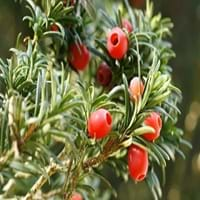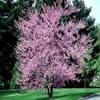Life Span
Perennial
Perennial
Type
Flowering Plants, Grass, Shrubs
Needled or Scaled Evergreen
Origin
Central America, North America
Eastern Asia
Types
Not Available
Not Available
Habitat
Temperate Regions, tropical environments
Dappled Shade, Shady Edge, Woodland Garden Secondary, Woodlands
USDA Hardiness Zone
7-10
4-7
AHS Heat Zone
Not Available
7-1
Sunset Zone
Not Available
A2, A3, 2a, 2b, 3a, 3b, 4, 5, 14, 15, 16, 17
Habit
Upright/Erect
Upright/Erect
Flower Color
Pink, Red, White, Yellow
Non Flowering Plant
Flower Color Modifier
Bicolor
Bicolor
Fruit Color
Black, Green
Red
Leaf Color in Spring
Green, Dark Green
Dark Green
Leaf Color in Summer
Dark Green
Dark Green
Leaf Color in Fall
Yellow green
Dark Green
Leaf Color in Winter
Dark Green
Dark Green, Bronze
Leaf Shape
Egg-shaped
Pinnate
Plant Season
Fall, Late Summer, Mid Summer
Spring, Summer, Fall, Winter
Sunlight
Full Sun
Full Sun, Partial Sun, Partial shade, Full Shade
Type of Soil
Loam, Sand
Loam
The pH of Soil
Neutral, Slightly Acidic, Slightly Alkaline
Acidic, Neutral, Alkaline
Soil Drainage
Well drained
Well drained
Bloom Time
Early Fall, Late Summer, Mid Summer
Fall, Spring, Summer, Winter
Tolerances
Drought
Drought
Where to Plant?
Container, Ground, Pot
Ground
How to Plant?
Seedlings
Stem Cutting, stem tip cuttings, Tip cutting
Plant Maintenance
Low
Medium
Watering Requirements
Do not water excessively
Average Water Needs, Do Not over Water, Do not water frequently
In Summer
Lots of watering
Lots of watering
In Spring
Moderate
Moderate
In Winter
Average Water
Average Water
Soil pH
Neutral, Slightly Acidic, Slightly Alkaline
Acidic, Neutral, Alkaline
Soil Type
Loam, Sand
Loam
Soil Drainage Capacity
Well drained
Well drained
Sun Exposure
Full Sun
Full Sun, Partial Sun, Partial shade, Full Shade
Pruning
Cut back old stems to the ground
Remove damaged leaves, Remove dead branches, Remove dead leaves
Fertilizers
as it is a flowering plant, use high phosphorous content fertilizer
All-Purpose Liquid Fertilizer
Pests and Diseases
Aphids, Slugs
Red blotch
Plant Tolerance
Drought
Drought
Flower Petal Number
Single
Single
Foliage Texture
Coarse
Fine
Foliage Sheen
Matte
Not Available
Attracts
Bees, Butterflies
Aphids, Mealybugs, White Pine Weevil
Allergy
Not Available
Pollen
Aesthetic Uses
Showy Purposes, small hedge
Bonsai, Borders
Beauty Benefits
Making cosmetics
Not Available
Environmental Uses
Not Available
Air purification
Medicinal Uses
anti-inflammatory, Aphrodisiac, Diuretic, Purgative, Vulnerary
anti-cancer
Part of Plant Used
Flowers, Leaves
Fruits, Wood
Other Uses
Edible dye
Used as a dye, Wood is used for making furniture
Used As Indoor Plant
No
No
Used As Outdoor Plant
Yes
Yes
Garden Design
Container, Edging, Feature Plant, Foundation, Wildflower
Feature Plant, Foundation, Groundcover, Hedges, Screening, Wind Break, Topiary, Bonsai, Espalier
Botanical Name
Mirabilis jalapa
TAXUS cuspidata
Common Name
marvel of peru, four o'clock flower
spreading yew
In Hindi
Mirabilis jalapa
Japanese Yew
In German
Wunderblume
japanische Eibe
In French
Belle-de-nuit
Japanese Yew
In Spanish
Dondiego de noche
tejo japonés
In Greek
mirabilis Jalapa
Ιαπωνικά Yew
In Portuguese
Maravilha
Xapanese Filho
In Polish
mirabilis Jalapa
Xapanese Son
In Latin
mirabilis Ja-
Filius Xapanese
Phylum
Magnoliophyta
Tracheophyta
Class
Magnoliopsida
Pinopsida
Order
Caryophyllales
Pinales
Family
Nyctaginaceae
Taxaceae
Clade
Angiosperms, Core eudicots, Eudicots
Not Available
Tribe
Not Available
Not Available
Subfamily
Not Available
Not Available
Number of Species
Not Available
Not Available
Importance of Mirabilis Jalapa and Japanese Yew
Want to have the most appropriate plant for your garden? You might want to know the importance of Mirabilis Jalapa and Japanese Yew. Basically, these two plants vary in many aspects. Compare Mirabilis Jalapa and Japanese Yew as they differ in many characteristics such as their life, care, benefits, facts, etc. Every gardener must at least have the slightest clue about the plants he wants to plant in his garden. Compare their benefits, which differ in many ways like facts and uses. The medicinal use of Mirabilis Jalapa is anti-inflammatory, Aphrodisiac, Diuretic, Purgative and Vulnerary whereas of Japanese Yew is anti-cancer. Mirabilis Jalapa has beauty benefits as follows: Making cosmetics while Japanese Yew has beauty benefits as follows: Making cosmetics.
Compare Facts of Mirabilis Jalapa vs Japanese Yew
How to choose the best garden plant for your garden depending upon its facts? Here garden plant comparison will help you to solve this query. Compare the facts of Mirabilis Jalapa vs Japanese Yew and know which one to choose. As garden plants have benefits and other uses, allergy is also a major drawback of plants for some people. Allergic reactions of Mirabilis Jalapa are Not Available whereas of Japanese Yew have Pollen respectively. Having a fruit bearing plant in your garden can be a plus point of your garden. Mirabilis Jalapa has no showy fruits and Japanese Yew has showy fruits. Also Mirabilis Jalapa is not flowering and Japanese Yew is not flowering . You can compare Mirabilis Jalapa and Japanese Yew facts and facts of other plants too.





